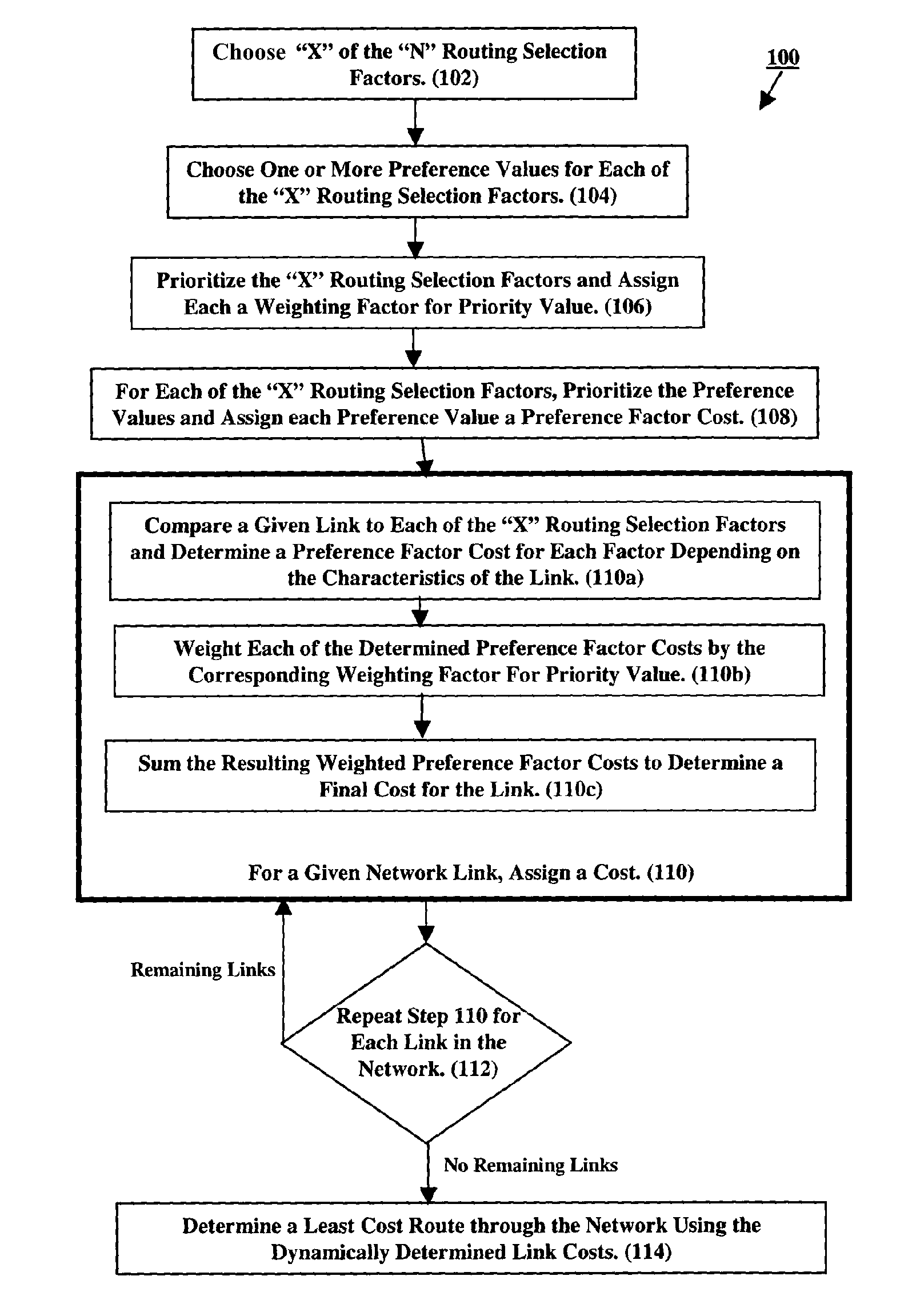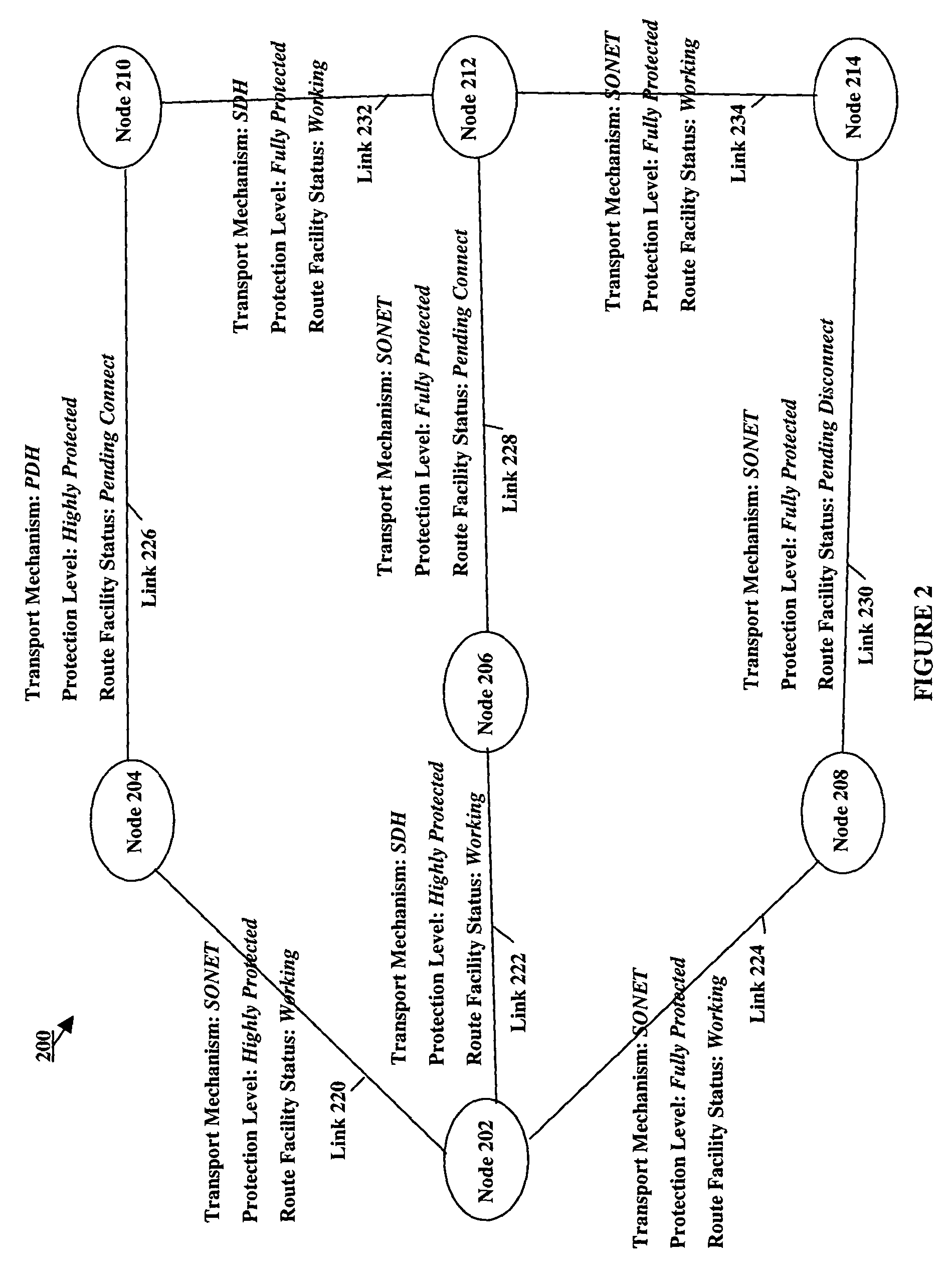Dynamic cost network routing
a network routing and dynamic cost technology, applied in the field of automatic routing, can solve the problems of static costs, inability to change, and the cost of each user of the network is subject to these costs
- Summary
- Abstract
- Description
- Claims
- Application Information
AI Technical Summary
Benefits of technology
Problems solved by technology
Method used
Image
Examples
first embodiment
[0017]FIG. 1 is a flow chart of our inventive method 100 for determining a network route using dynamically defined link-costs based on user preferences, with steps 106-114 being executed by a programmed element of the network routing system. Initially, an administrator defines a set of “N” routing selection factors for a given network. The actual factors are based on the characteristics of the links that comprise the network and are the same for all users of the network. In addition, a set of allowable values is defined for each routing selection factor. Again, the range of allowable values is the same for all users of the network. The specified routing selection factors and the set of allowable values for each factor are not specific to our invention. For discussion purposes, Table 1 shows a set of generic routing selection factors and allowable values for each factor. Table 2 is an example result of applying method 100 to the factors and values of Table 1 (The entries of Table 2 a...
second embodiment
In our inventive method for determining a network route using dynamically defined link-costs based on user preferences, the method proceeds as shown in FIG. 1, steps 102-108; however, rather than the network routing system assigning a cost to each network link and then determining all possible routes, as in steps 110-114, these steps are combined. Specifically, once having the “weighting factor for priority values” and “preference factor costs,” the network routing system determines a cost for each link as it determines a route between the start and end nodes as specified by the user. This method has the advantage that a link cost is not calculated for a given link unless the designated least cost routing algorithm considers the link in a possible route.
[0036]FIG. 3 is a flow chart of the second embodiment of our inventive method 300, with steps 302-308 resembling steps 102-108, respectively. Moving to step 310, the network routing system determines, according to the least cost rout...
PUM
 Login to View More
Login to View More Abstract
Description
Claims
Application Information
 Login to View More
Login to View More - R&D
- Intellectual Property
- Life Sciences
- Materials
- Tech Scout
- Unparalleled Data Quality
- Higher Quality Content
- 60% Fewer Hallucinations
Browse by: Latest US Patents, China's latest patents, Technical Efficacy Thesaurus, Application Domain, Technology Topic, Popular Technical Reports.
© 2025 PatSnap. All rights reserved.Legal|Privacy policy|Modern Slavery Act Transparency Statement|Sitemap|About US| Contact US: help@patsnap.com



